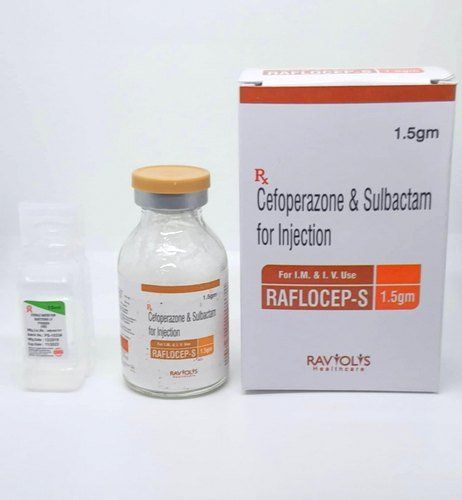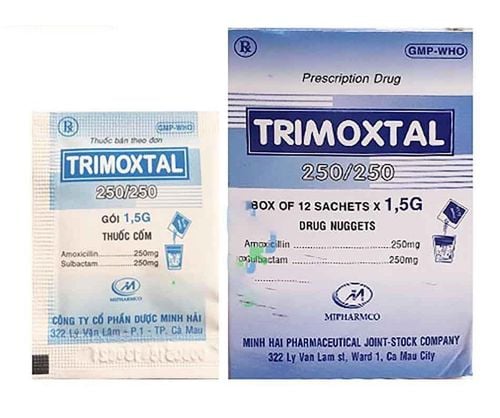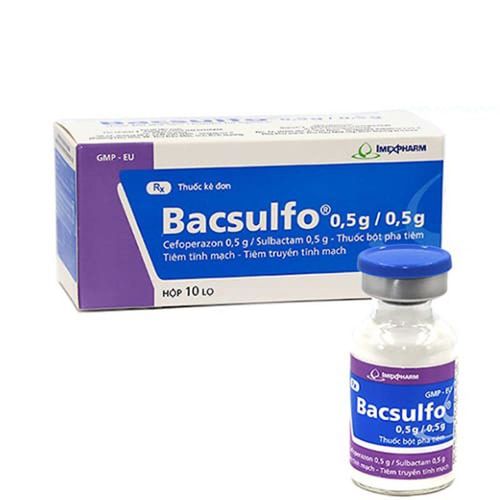This is an automatically translated article.
Trimoxtal is an antibiotic indicated in the treatment of infections caused by sensitive bacteria such as respiratory tract infections, abdominal infections, gynecological infections, urinary tract infections,... Let's find out. About the use, the note when using Trimoxtal drug through the article below.1. Uses of the drug Trimoxtal
What is Trimoxtal? Trimoxtal contains the active ingredient Amoxicillin and Sulbactam. Drug dosage form under the following combinations:Trimoxtal 250/250 contains 250mg Amoxicillin and 250mg Sulbactam; Trimoxtal 250/125 contains 250mg of Amoxicillin and 125mg of Sulbactam; Trimoxtal 500/500 contains 500mg Amoxicillin and 500mg Sulbactam; Trimoxtal 875/125 contains 875mg of Amoxicillin and 125mg of Sulbactam. Active ingredient Amoxicillin is a beta-lactam antibiotic with broad spectrum of action against gram-positive and gram-negative bacteria, acting by inhibiting bacterial cell wall synthesis. Amoxicillin is easily destroyed by beta-lactamase enzymes secreted by bacteria, so the drug has no effect on strains of bacteria that produce these enzymes.
Active ingredient Sulbactam is an irreversible competitive inhibitor of the enzyme Beta - lactamase. The combination of Amoxicillin and Sulbactam increases the antibacterial effect, reducing the risk of bacterial resistance.
Trimoxtal is indicated in the following cases:
Respiratory infections, oral infections including: Sinusitis, otitis media, pharyngitis, tracheitis, laryngitis, bronchitis, pneumonia; Gynecological infections, abdominal infections; Urinary tract infections: Recurrent cystitis, complicated cystitis; Skin and soft tissue infections: Cellulitis, lymphadenitis, root abscess, oral abscess caused by Staphylococcus aureus, open wound or tissue loss.
2. Dosage of Trimoxtal
Trimoxtal belongs to the group of prescription drugs, the dose of which is prescribed by the treating doctor based on the patient's condition. Trimoxtal is taken orally, should be taken on an empty stomach for better therapeutic effect. Some recommendations on the dosage of Trimoxtal are as follows:The recommended dose according to Amoxicillin is Trimoxtal 250/250 (or 250/125) - Trimoxtal 500/500mg every 8 hours; For adults and children over 40kg: Take 500mg/time x 2-3 times/day; Children under 40kg: For mild and moderate infections, the dose is 20mg/kg/day divided into 3 oral doses. For severe infections, the dose is 40mg/kg/day divided into 3 doses for 5 days. The dose of Trimoxtal should be adjusted in patients with renal impairment based on the patient's creatinine clearance.
3. Side effects of Trimoxtal
Trimoxtal can cause some unwanted effects as follows:Common: Allergies, nausea, diarrhea, vomiting, indigestion; Uncommon: Vomiting, nausea, diarrhea, erythema, maculopapular rash, urticaria, Stevens - Johnson syndrome; Rare: Slight increase in SGOT levels, irritability, agitation, anxiety, insomnia, behavioral changes, confusion, dizziness, anemia, thrombocytopenic purpura, thrombocytopenia, leukocytosis eosinophils, agranulocytosis. Gastrointestinal side effects of Amoxicillin usually disappear upon discontinuation of treatment. Urticaria, other rash and serum sickness-like reactions can be prevented and treated with antihistamines (where necessary, systemic corticosteroid therapy may be used). However, the patient should not arbitrarily handle unwanted symptoms, but should notify the doctor for treatment.
4. Notes when using Trimoxtal
4.1. Contraindications
The use of Trimoxtal is contraindicated in the following cases:Patients with a history of hypersensitivity to Amoxicillin, Peninicillin, Cephalosporin, Sulbactam or any of the ingredients of Trimoxtal; People with a history of diseases on the gastrointestinal tract; Patients with severe infections have mononucleosis; Herpes virus infection; The patient is being treated with Allopurinol; Pregnant women; Women who are breastfeeding; Children under 12 years old.
4.2. Use caution
Some notes when using Trimoxtal are as follows:Patients need to periodically check liver and kidney function during long-term treatment with Trimoxtal; Serious hypersensitivity reactions may occur in patients with a history of allergy to penicillin or other allergens, so the patient should be carefully examined for a history of allergy to Amoxicillin, Cephalosporins and other allergens; In the event of an allergic reaction such as Quincke's edema, erythema, anaphylaxis, Stevens-Johnson syndrome, Amoxciclin therapy should be discontinued immediately and emergency treatment with adrenaline, corticosteroid therapy, oxygen, ventilation, etc. including intubation and never treated with antibiotics Penicillin, Cephalosporin after that; For pregnant women: There are no studies demonstrating the potential for fetal harm with Amoxicillin and Sulbactam. Therefore, the use of drugs in this subject should be prescribed by a doctor based on the benefits and risks of treatment; Lactation: Amoxicillin has been shown to be excreted in human milk, so caution should be exercised when Trimoxtal is used in nursing women.
5. Drug interactions
Trimoxtal may cause the following interactions:Nifedipine increases the absorption of Amoxicillin; Concomitant use of Allopurinol and Amoxicillin or Ampicillin increases the likelihood of rash of Amoxicillin and Ampicillin; Antagonistic effects when using Amoxicillin with bacteriostatic antibiotics such as Tetracycline, Chloramphenicol. Drug interactions occur that reduce the therapeutic effect of Trimoxtal, increasing the risk of unwanted effects. Therefore, patients need to inform their doctors about the drugs and supplements they are using before treatment with Trimoxtal to ensure safety and effectiveness during treatment.













